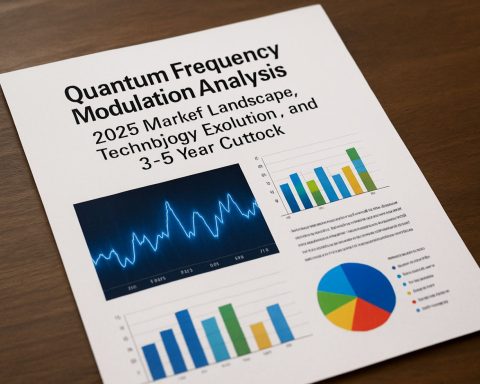- Two NASA sounding rockets were launched to study auroras and their influence on the upper atmosphere.
- The rockets released tracer payloads, creating luminous trails that help scientists understand interactions between solar winds and Earth’s magnetic fields.
- Auroras are not just visual phenomena; they impact GPS, power grids, and other critical systems.
- Research at Poker Flat Research Range provides insights necessary for predicting and mitigating atmospheric disruptions.
- This mission highlights the intersection of scientific exploration and natural beauty, enhancing our comprehension of celestial events.
Under the muted glow of the Alaskan heavens, an enchanting spectacle transpired. Two NASA sounding rockets launched into the crisp, frigid air from Poker Flat Research Range with a singular mission: to unravel the enigmatic dance of the auroras and their impact on our upper atmosphere.
During the dark, still hours of early Tuesday morning, these rockets streaked across the night sky, painting vivid luminescent trails above the expansive wilderness north of Fairbanks. Like celestial artists, they carved a brilliant tableau against the canvas of the night, mesmerizing onlookers across central and northern Alaska.
This high-flying endeavor is not just for show. The tracer payloads, akin to colorful inks dispersed by the rockets, serve a critical purpose. By observing the vibrant patterns they form, scientists glean insights into the complex mechanisms at play far above the earth’s surface. Here, particles from the solar wind interact with our planet’s magnetic fields to produce the mesmerizing auroral displays.
Why does this matter? The auroras are more than just natural fireworks; they are manifestations of larger atmospheric processes that can affect everything from GPS systems to power grids. Understanding these phenomena helps scientists predict and mitigate potential disruptions.
NASA’s mission, brimming with both scientific intrigue and visceral beauty, underscores a universal quest to understand our world and beyond. As the glow of the tracer fades into the dawn, the mission brings us closer to comprehending the celestial events that, though remote, influence our daily lives. This spectacle serves as a potent reminder that in the marriage of science and nature, there is always more to explore.
Unlocking the Mysteries of the Northern Lights: NASA’s Bold Quest
Understanding the Science Behind Auroral Displays
NASA’s recent mission with two sounding rockets from the Poker Flat Research Range is pivotal in expanding our understanding of the auroras, also known as the Northern Lights. These colorful displays are the result of charged particles from the sun interacting with the Earth’s magnetic field. This natural spectacle is not merely an awe-inspiring visual event; it plays a critical role in our atmospheric sciences.
How Auroras Impact Modern Life
The auroras affect various technologies and systems we rely on every day:
– GPS Disruptions: Auroras can cause signal irregularities, leading to potential inaccuracies in navigation systems, crucial for aviation and maritime operations.
– Power Grids: Electrojet currents during intense auroral events can induce geomagnetic storms, potentially overloading power grid systems, causing blackouts.
– Satellite Operations: The increased plasma densities in the ionosphere can interfere with satellite communications, affecting global internet and television services.
How NASA’s Study Helps
By analyzing the tracer patterns created by the sounding rockets, scientists gain invaluable data on the dynamic processes happening in the ionosphere, a critical region of the Earth’s atmosphere.
Key Objectives of the Mission
1. Ionization Rate Measurement: Determine the rate at which atmospheric gases are ionized by incoming solar particles.
2. Magnetic Field Interaction: Assess how magnetic field lines shift and move during auroral events.
3. Potential to Improve Forecasting: Develop better prediction models for auroral activities and their consequent effects on technology and services.
Real-World Use Cases
Optimization of Navigation Systems: Research is enabling the development of algorithms that can better mitigate GPS inaccuracies during intense solar activity.
Grid Protection Protocols: Enhanced understanding aids in the design of early-warning systems that can safeguard power grids against geomagnetic-induced currents.
Future Prospects
The data acquired from this mission will lay the groundwork for future experiments and technology developments aimed at better predicting and managing space weather phenomena. In a world increasingly dependent on technology, understanding space weather and its impacts is crucial.
Pros and Cons
Pros:
– Enhances understanding of atmospheric processes.
– Helps in developing better prediction models for space weather.
– Can lead to improved technology resilience.
Cons:
– High-cost endeavors with uncertain immediate practical benefits.
– Complex data might lead to misinterpretations if not accurately analyzed.
Actionable Recommendations
– For Corporations: Invest in technology that can adapt to space weather forecasts for better operational stability.
– For Researchers: Collaborate on interdisciplinary studies to maximize the utility of data received from such missions.
– For Enthusiasts: Follow NASA’s updates to engage with ongoing space weather developments and educational opportunities.
Conclusion
As the world continues embracing high-tech solutions for everyday challenges, understanding phenomena like auroras becomes increasingly relevant. Investing in research provides a safeguard against potential disruptions while unlocking the mysteries of our atmosphere.
For more information on the latest space missions and research, visit Nasa.







